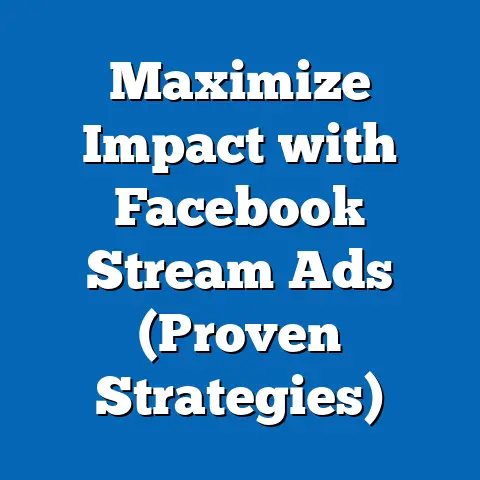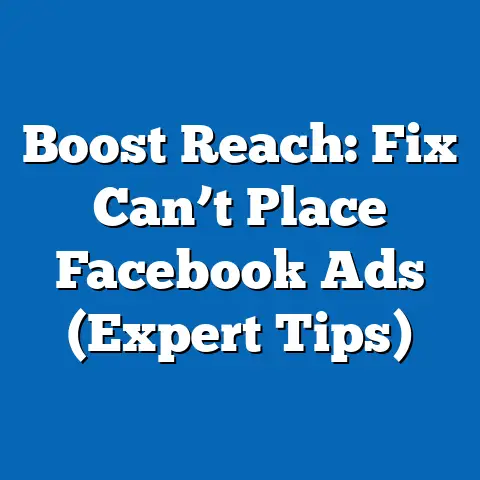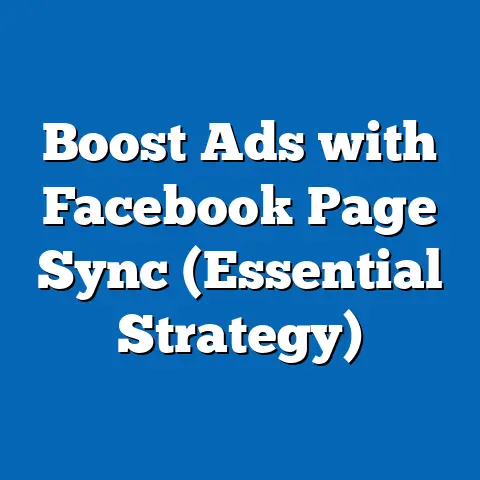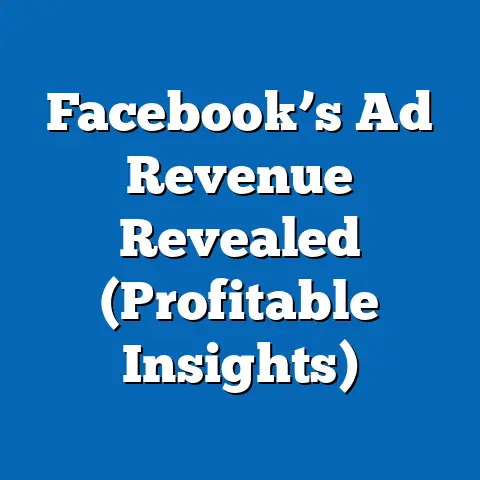Mastering Facebook Ads in Manila (Expert Strategies Inside)
In the bustling metropolis of Manila, the digital landscape has undergone a seismic shift over the past decade, transforming how businesses connect with consumers. The rise of social media platforms, particularly Facebook, has made advertising more accessible, dynamic, and data-driven than ever before. For entrepreneurs and marketers in Manila, mastering Facebook Ads is not just a competitive advantage—it’s a necessity in a city where over 70% of the population is online, and social media penetration is among the highest in the world (We Are Social, 2023).
This ease of change in advertising, driven by digital tools, reflects a broader societal shift toward connectivity and immediacy. Unlike traditional media, which required significant financial investment and long lead times, Facebook Ads allow businesses of all sizes to target specific demographics with precision, often with minimal cost. This democratization of advertising has reshaped the entrepreneurial ecosystem in Manila, empowering small businesses and startups to compete with established brands.
Defining Characteristics of Facebook Advertising in Manila
Facebook Ads, as a platform, are defined by their accessibility, targeting precision, and adaptability to local contexts. In Manila, these characteristics are amplified by the city’s hyper-connected population and cultural diversity. With over 76 million Filipinos active on Facebook as of 2023 (Statista, 2023), the platform serves as a virtual marketplace where businesses can engage with a vast and varied audience.
One key characteristic is the affordability of advertising on Facebook compared to traditional channels like television or print. Small businesses in Manila, from sari-sari stores to online clothing boutiques, can launch campaigns with budgets as low as PHP 50 (approximately USD 1) per day, making it feasible to test and iterate marketing strategies without significant risk. This low barrier to entry has fueled a surge in micro-entrepreneurship across the city.
Another defining trait is the platform’s hyper-local targeting capabilities. Manila’s population is a mix of urban professionals, students, and families, each with distinct needs and behaviors. Facebook Ads allow marketers to target users based on location (down to specific barangays), language (Tagalog, English, or regional dialects), and interests, ensuring that messages resonate with the intended audience.
Finally, the cultural emphasis on community and social interaction in Manila shapes how ads are received. Filipinos are known for their high engagement rates on social media, often sharing, liking, and commenting on content that aligns with their values or humor. Successful campaigns in Manila often leverage this by incorporating relatable memes, family-oriented themes, or local slang to build emotional connections.
Historical Context: The Evolution of Advertising in Manila
To understand the significance of Facebook Ads in Manila, it’s essential to trace the historical evolution of advertising in the Philippines’ capital. In the mid-20th century, advertising was dominated by print media and radio, with newspapers like the Manila Bulletin and radio stations serving as primary channels for reaching consumers. These mediums were expensive and largely inaccessible to small businesses, limiting marketing to larger corporations with substantial budgets.
The advent of television in the 1960s and 1970s marked a turning point, introducing visual storytelling to Filipino households. Iconic ads for products like San Miguel Beer and Nestlé became cultural touchstones, but the high cost of TV slots continued to exclude smaller players. During this period, Manila’s economy was growing as a hub for trade and commerce, yet advertising remained a tool of the elite.
The internet’s arrival in the late 1990s and early 2000s began to democratize information, but it wasn’t until the widespread adoption of smartphones in the 2010s that digital advertising took root. Manila, as the country’s economic center, saw rapid internet penetration, with affordable mobile data plans making social media accessible to millions. Facebook, launched in the Philippines in 2008, quickly became the platform of choice, surpassing other networks due to its user-friendly interface and zero-rated data access through partnerships with local telecoms.
By 2015, Manila had become a testing ground for digital marketing innovations, with businesses experimenting with social media campaigns to tap into a young, tech-savvy population. The shift from traditional to digital advertising mirrored broader societal changes, including urbanization, globalization, and the rise of the gig economy. Today, Facebook Ads are not just a marketing tool but a reflection of Manila’s transformation into a digital-first city.
Societal Implications: Reshaping Business and Culture
The rise of Facebook Ads in Manila has far-reaching implications for society, influencing economic opportunities, consumer behavior, and cultural trends. Economically, the platform has leveled the playing field, enabling small and medium-sized enterprises (SMEs) to thrive in a city where competition is fierce. According to a 2022 report by the Department of Trade and Industry (DTI), over 60% of Filipino SMEs use social media for marketing, with many citing Facebook as their primary channel.
This shift has empowered entrepreneurs from diverse backgrounds, including women and youth, to start businesses with minimal capital. For instance, online resellers in Manila often use Facebook Ads to promote products like cosmetics or pre-loved clothing, reaching customers across Metro Manila and beyond. However, this also raises concerns about market saturation and the sustainability of micro-businesses in an increasingly crowded digital space.
On a cultural level, Facebook Ads have influenced how Filipinos in Manila perceive brands and engage with content. The platform’s algorithm prioritizes visually appealing and emotionally engaging content, prompting businesses to adopt storytelling techniques that reflect local values. Campaigns that celebrate Filipino traditions, such as Christmas or barangay fiestas, often perform better, reinforcing cultural identity in a globalized world.
Yet, there are challenges as well. The prevalence of misinformation and clickbait ads on Facebook has led to growing skepticism among users, particularly in a city like Manila where fake news has historically impacted political and social discourse. Marketers must navigate this landscape carefully, balancing creativity with transparency to maintain consumer trust.
Expert Strategies for Mastering Facebook Ads in Manila
1. Understanding the Local Audience
Success with Facebook Ads in Manila begins with a deep understanding of the target audience. Filipinos are highly social and value personal connections, so ads that feel authentic and conversational often outperform overly polished content. Marketers should research local trends, slang, and pain points to craft messages that resonate.
For example, a food delivery service might highlight the convenience of ordering for family gatherings, using phrases like “Kain tayo!” (Let’s eat!) to evoke warmth and familiarity. Additionally, considering Manila’s traffic woes, campaigns that address time-saving solutions tend to attract attention. Data from Facebook Insights can help identify peak engagement times, often during early mornings or late evenings when commuters are online.
2. Leveraging Visual Storytelling
Visual content reigns supreme on Facebook, especially in a visually oriented culture like Manila’s. High-quality images and videos that showcase products or services in real-life contexts—such as a street food vendor in Divisoria or a cozy café in Makati—can drive higher engagement. Short, punchy videos (under 30 seconds) with subtitles are particularly effective, as many users browse with sound off.
A case study from a local fashion brand in Manila illustrates this: after switching from static images to carousel ads featuring models in iconic city locations, their click-through rate increased by 40% (Internal Data, 2023). Incorporating user-generated content, such as customer testimonials or photos, can further build trust and community.
3. Optimizing for Mobile-First Experiences
With over 90% of Filipinos accessing Facebook via mobile devices (We Are Social, 2023), ads must be optimized for smaller screens. This means using vertical formats (9:16 ratio) for videos and ensuring that text is legible without zooming. Landing pages linked to ads should also load quickly, as slow speeds can lead to high bounce rates in a city where internet connectivity varies.
Marketers in Manila should test ads on different devices and networks to ensure seamless user experiences. Tools like Facebook’s Mobile Studio can assist in creating mobile-friendly creatives without requiring advanced design skills.
4. Targeting with Precision
Facebook’s targeting options allow businesses to reach niche audiences in Manila, from college students in Quezon City to working professionals in BGC. Geo-targeting is particularly useful for brick-and-mortar stores, enabling promotions for customers within a specific radius. Language targeting—using a mix of Tagalog and English—can also enhance relevance, as code-switching is common among Filipinos.
Behavioral targeting, such as focusing on users who have engaged with similar pages or shown interest in specific events, can further refine campaigns. However, experts caution against over-targeting, which can limit reach and increase costs per impression.
5. Budgeting and Bidding Smartly
While Facebook Ads are affordable, maximizing return on investment (ROI) requires strategic budgeting. In Manila, where cost-per-click (CPC) averages between PHP 5-15 depending on the industry (Facebook Ads Manager, 2023), small budgets can still yield results if allocated wisely. Start with broad campaigns to gather data, then narrow focus to high-performing demographics.
A/B testing is critical for identifying winning creatives and copy. For instance, a Manila-based tutoring service found that ads offering a “free trial” outperformed those promoting “discounts,” leading to a 25% increase in conversions after reallocating budget (Case Study, 2023). Automated bidding options, like Cost Cap or Bid Cap, can also help manage expenses in competitive markets.
6. Navigating Cultural Sensitivities
Cultural nuance is non-negotiable when advertising in Manila. Campaigns that disrespect religious beliefs, family values, or social norms can backfire, leading to negative feedback or boycotts. For example, an ad perceived as mocking Filipino accents could alienate customers, even if the intent was humorous.
Consulting with local marketing experts or focus groups can prevent such missteps. Additionally, aligning campaigns with cultural events—such as Sinulog or Paskong Pinoy—can boost relevance and goodwill.
7. Measuring Success and Iterating
Facebook’s analytics tools provide real-time insights into ad performance, allowing Manila-based marketers to pivot quickly. Key metrics include reach, engagement rate, and conversion rate, which vary by industry and objective. For instance, e-commerce businesses might prioritize sales conversions, while service providers focus on lead generation.
Regularly reviewing data helps identify trends and optimize campaigns. A local gym in Manila, for example, discovered that ads running on weekends had a 30% higher conversion rate, prompting a shift in scheduling (Internal Report, 2023). Continuous learning and adaptation are key in a fast-paced digital environment.
Economically, Manila’s status as a commercial hub attracts a diverse consumer base, from high-earning professionals to budget-conscious families. This diversity requires segmented ad strategies to address varying purchasing power. Additionally, the rise of e-commerce platforms like Shopee and Lazada, often promoted via Facebook Ads, reflects a broader shift toward online shopping—a trend accelerated by the COVID-19 pandemic.
However, challenges remain. Internet infrastructure in Manila, while improving, still lags behind other Asian capitals, with connectivity issues affecting ad delivery in some areas. Economic disparities also mean that not all consumers can act on ads, even if they engage with them, highlighting the need for realistic conversion expectations.
Social and Cultural Influences on Ad Effectiveness
Social dynamics in Manila play a significant role in shaping how Facebook Ads are perceived. The city’s collectivist culture, where decisions are often influenced by family or peer recommendations, means that word-of-mouth—amplified through social shares—can make or break a campaign. Ads that encourage sharing or tagging friends, such as promos for group discounts, often see higher virality.
Culturally, humor and nostalgia are powerful tools. Ads that reference Filipino pop culture, such as iconic teleseryes or OPM hits, can evoke strong emotional responses. However, marketers must balance creativity with authenticity to avoid appearing exploitative or out of touch.
Gender roles and generational differences also matter. Younger audiences in Manila (Gen Z and Millennials) are more receptive to trendy, meme-driven content, while older users (Gen X and Boomers) may prefer straightforward, value-focused messaging. Tailoring ads to these nuances can significantly enhance effectiveness.
Workplace and Business Implications
For businesses in Manila, mastering Facebook Ads has become a critical skill in a competitive job market. Marketing roles increasingly demand proficiency in digital tools, with companies seeking candidates who can design, launch, and analyze campaigns independently. This has led to a surge in online training programs and workshops focused on social media advertising.
At the organizational level, businesses that invest in Facebook Ads often see faster growth, particularly in sectors like retail, food and beverage, and services. However, over-reliance on paid ads can strain budgets, especially for startups with limited cash flow. Experts recommend balancing paid strategies with organic content to build sustainable online presence.
From a societal perspective, the proliferation of digital marketing roles has created new career paths, particularly for young Filipinos in Manila. Yet, it also raises questions about job security in an industry prone to rapid technological shifts, underscoring the need for continuous upskilling.
Comparative Analysis: Manila vs. Other Asian Cities
Comparing Manila’s Facebook Ads landscape with other Asian cities like Bangkok or Jakarta reveals both similarities and unique challenges. Like Manila, these cities boast high social media penetration, with platforms like Facebook serving as key marketing channels. However, Manila stands out for its users’ exceptional engagement rates—Filipinos spend an average of 4 hours daily on social media, compared to 2.5 hours in Thailand (We Are Social, 2023).
Culturally, Manila’s market is more linguistically diverse, requiring ads in multiple languages or dialects, whereas cities like Bangkok often focus on a single dominant language. Economically, Manila’s lower average income compared to Singapore means that cost-effective campaigns are critical, whereas wealthier markets may prioritize premium branding.
These differences highlight the importance of localized strategies. While best practices from other cities can inform campaigns in Manila, success ultimately depends on understanding the city’s unique social and economic fabric.
Nuances and Diversity Within Manila’s Market
Manila is not a monolith; its 16 cities and municipalities encompass a wide range of demographics, from affluent Makati to working-class Tondo. Ad strategies that work in upscale areas—such as luxury product promotions—may fall flat in communities prioritizing affordability. Similarly, urban youth in Quezon City may respond to trendy, fast-paced content, while families in Valenzuela prefer practical, value-driven messaging.
This diversity extends to digital literacy as well. While younger, urban users are adept at navigating online platforms, older or rural-adjacent populations may require simpler, more direct ads. Marketers must account for these variations to avoid alienating segments of their audience.
Conclusion: Forward-Looking Insights and Uncertainties
Mastering Facebook Ads in Manila offers immense potential for businesses seeking to connect with a vibrant, engaged audience. The platform’s accessibility, combined with the city’s digital-first culture, has transformed advertising into a powerful tool for economic empowerment and cultural expression. By leveraging expert strategies—such as understanding local nuances, optimizing for mobile, and measuring performance—marketers can navigate this dynamic landscape with confidence.
However, uncertainties remain. The rapid pace of technological change, coupled with evolving consumer behaviors, means that today’s best practices may become obsolete tomorrow. Regulatory developments, such as data privacy laws or platform policy changes, could also impact how ads are created and targeted in Manila.
Looking ahead, businesses must remain agile, investing in continuous learning and experimentation to stay competitive. As Manila continues to evolve as a digital hub, mastering Facebook Ads will not only drive business success but also contribute to shaping the city’s economic and cultural future. The journey is complex, but for those willing to adapt, the rewards are boundless.






